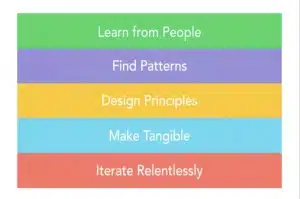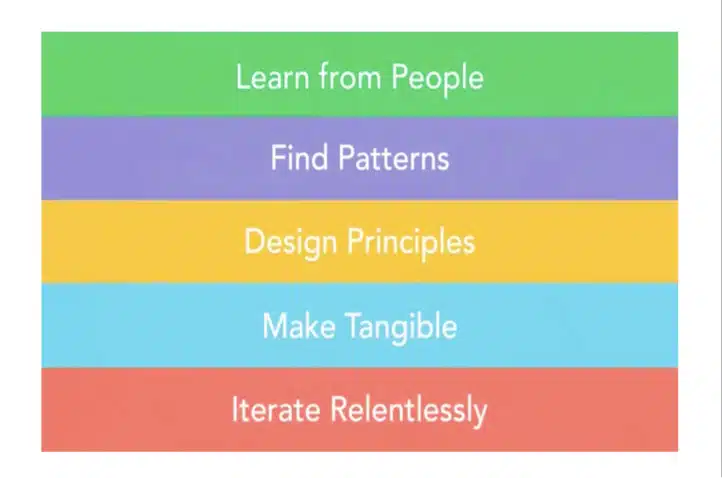
User Experience Stories: As <Persona> I want <What?> so that <Why?>
I remember teaching storytelling to Microsoft engineers in the early 2000s and explaining what I thought of as “story thinking” only to be told “no, that’s design thinking!” And it is, sort of. For me story thinking has always been agile enough to examine, test, and respond to intangible beliefs, values, emotions, as well as measurable feedback. Design thinking and Agile methods (project management processes that incorporate frequent reassessment and adaptation) simply formalize the sequence that best leads to functionally and perceptually rewarding goals. Developed to improve software design, User Experience (UX) templates and methods blend the work of a team of designers in ways that keep conclusions flexible and responsive as situations change. One way they keep things flexible is to pursue goals that feature users’ perceptual interpretations as “user stories.”
UX designers combine interviews (stories) and data to categorize consumers into personas, so they can fill in the blanks: “As <Persona> I want <What?> so that <Why?>” This template definitely keeps technology responsive to subjective human needs. The UX definition of a user story applies to the specific purpose of design, but the design-thinking process that goes with the idea of UX stories is exactly how I teach executives to find stories that connect and communicate a message. It introduces the discipline of testing whole stories in realistic circumstances rather than evaluating bits and pieces of a story against hypothetical scenarios. The Agile process encourages us to spend more upfront time in discovery (observing and listening to existing stories), and finding current patterns, before establishing guidelines (what is most important), so we can test and retest new stories until they click. The UX process puts first things first when it comes to storytelling.
The only danger with UX philosophy from my point of view, is the habit of characterizing all emotionally driven behaviors as “cognitive biases” (systematic errors). Putting all emotional reasoning into a basket labeled “systematic errors” makes it hard to reinforce moral biases that are only irrational in the short term but represent centuries of emotional reasoning for when, where, and how to override short term quid pro quo expectations in favor of long-term goals. Discrediting emotional reasoning creates emotion-less systems. To the overly rational, moral behaviors look like errors in judgment. We must be wary of people who suggest we “change the story,” when what they really mean is for us to change the morals that have put a dent in short term profits.
Emotion-based decision-making can be wrong, but that does not mean it is always wrong, or that emotions aren’t absolutely necessary for human decision – making. For instance, seeing a packed parking lot at a restaurant might make you decide to eat there, even though your emotions are biasing you to treat a correlation called social proof as if it were cause and effect. Packed parking lots do not cause good food. You were right for the wrong reasons. But jumping to the conclusion that cognitive biases like trusting social proof, basing choices on availability, or habits of loss avoidance are irrational and therefore wrong, ignores the fact that these habits have proven useful for centuries. When systems exploit rather than support cognitive biases, they potentially undermine critical reservoirs of social trust. For instance, social proof is a bias that encouraged cave men to drink water others had already tested. Categorizing “social proof” as a systematic error sidesteps moral concerns over manufacturing social proof by say, buying millions of Twitter followers. This betrayal undermines long-term trust in social proof to the point that collaboration becomes less and less likely.
Another bias called “loss avoidance” may also play a critical role to encourage “better safe than sorry” patterns that help us over-ride short term impulses in favor of living to fight another day. When storytellers exploit this bias by discouraging delayed gratification with threats of loss (“act now, offer ends soon!”) it erodes our emotional system for moderating unwise impulses. Stories that frame not voting as a way to avoid loss erode faith that voting—imperfect as it is—will allow us to avoid much bigger losses down the line.
Excerpt from Chapter 11, 3rd ed. of The Story Factor (2019) AUDIBLE VERSION HERE

